Game design: don't confuse the player
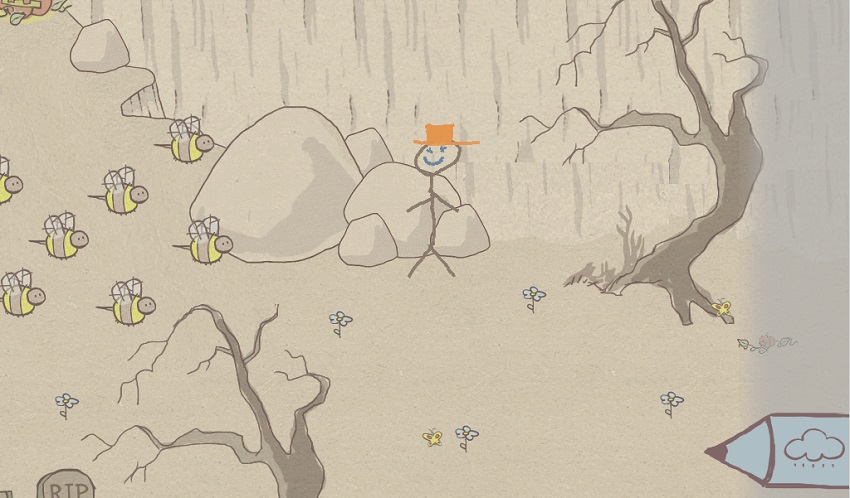
Gameplay can be a very difficult task. Some games, such as Snakes and Ladders , are fairly straightforward, but games such as SpaceChem and Factorio can be an incredibly difficult test of the brain.
Every game, from simple to complex, it is very important to explain to the player how to play it. It doesn't matter if he rolls dice or solves complex mathematical equations - the main thing is for the player to understand how the game works.
But the creators of some games make them complex without need. In most games, there is a clear set of rules, and any possible actions of the player lead to the expected results, but some games sometimes become confusing. Let's take a look at some of the most frequent traps for developers and think about how to avoid them.
Clear rules
The most important thing is to keep the rules consistent. Usually, games are built on the principles of complexity and development, but in order to evaluate a player’s skill, we use rules. Most often, the player must have a clear understanding of what he wants to achieve, because a game without obstacles is not a game, but a toy. There is nothing wrong with creating toys - Minecraft is very popular - but games need rules, and the player is not at all interested if the rules change every ten seconds.
')
One of the ways the game changes the rules is that it makes some characters immortal. Most often RPGs are prone to this, they give certain NPC “plot armor”, because if they die, the player will get stuck in the passage and will not be able to complete an important “quest”.
The existence of immortal NPC destroys the sense of immersion in the game, and although the developers do not want the player stuck in the game, they need to strive to create immutable rules of the world.
Often the immortal NPCs are not marked explicitly, and sometimes the player tries to kill an enemy who does not even take damage. If you want to introduce an immortal NPC into the game, then try to mark it explicitly, or just give it a chance to die.
There is nothing wrong with that (it was implemented in Planescape: Torment , and yet it remains one of the best RPGs in the world), and you can tell the player that he screwed up and won’t win.
Another aspect of “breaking the rules” is the invisible walls that still appear in games. It is not very fun to explore the world and suddenly stumble upon a barrier that impedes further movement. Sometimes such barriers are used only to force players to make a long workaround, artificially increasing the time of passage.
In some cases, invisible walls may be necessary: there must be a limit on how far the player has left the card, and invisible barriers help in this. But when players stumble upon these invisible walls in normally accessible zones, they very often feel like a bad design and a lack of planning.
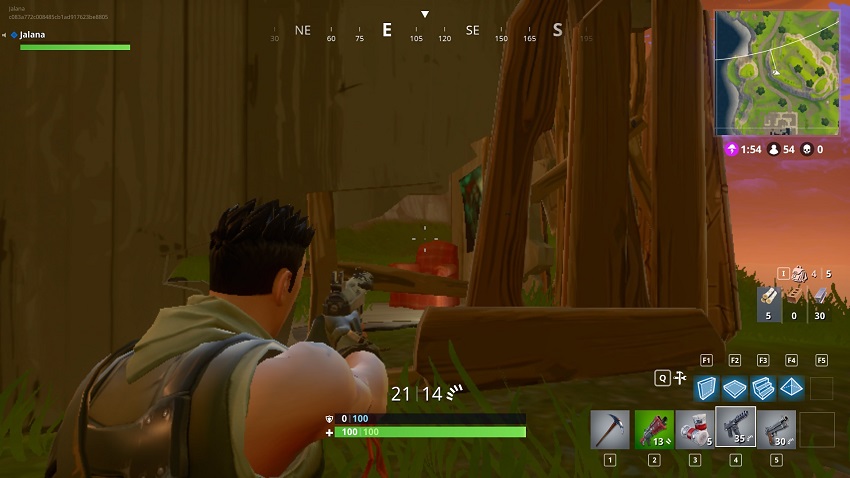
Now the problem was fixed with patches, but in early versions of Fortnite: Battle Royale there were problems with invisible barriers in the walls. The holes in these walls made it possible to look through, but they didn’t let the bullets through, that is, the shooting was confusing if the player tried to take someone by surprise.
And finally - do not change the rules in the middle of the game. Players make choices in games based on information, which means that bad information leads to bad choices. One example of this in video games is Deus Ex: Human Revolution : players who choose to play secretive characters suddenly stumbled upon “brick walls” in the form of bosses who could only be defeated in battle.
Later it was fixed with patches, but if you give the player the opportunity to play with a non-combat character, then it is not unpleasant to surprise him if he chooses such a character. This problem is also subject to “quick-time events” in the cutscene: most cutscenes are non-interactive, so when the quick-time event starts, it takes the player off guard.
Interestingly, this rule was broken in South Park: the Fractured but Whole . When a player fights with Cartman, he breaks the rules during the battle - ignores damage, makes additional moves, teleports, and so on. South Park fans will understand that such a brazen scam is fully consistent with the character of Cartman. Although at first the fight seems annoying, it makes it a little harder to hate this character, which makes the gameplay more holistic.
Clear goals
When developing the game, we invent the player goals and ways to achieve these goals. When the rules are clear, it is also clear how the player must achieve his goal. But what if the goal is not very clear? What if a player has clear rules, but he doesn't know exactly what he should do?
In some cases, this approach with a “fuzzy goal” is quite suitable - in Minecraft there is almost no plot-creating plot, but the player can invent them for himself. Games are determined by the rules (kill the ancient god, collect the key or make a pickaxe), so it is important that the player understands his goals well.
In puzzle games, do not hide fragments of puzzles from the player. Of course, it is worthwhile to make him work hard, but if a player spends twenty minutes figuring out how to open the door, and then you say, “Ha-ha, but the hidden key was right there all the time,” then he will be somewhat annoyed. In some old games, this approach was called " pixel hunting (pixel hunting) ". This is a process in which important elements of the game hid in small areas of the screen, which forced players to search each screen with the mouse in search of lost items.

On this screen from Indiana Jones, the player must study each book that says “book” and not “books”. Have fun.
Make sure that the game elements are clearly visible. This applies to all games, but it is doubly important in puzzle games. If the player cannot solve the puzzle and you show him the solution, and he says, “Aha, but I didn’t understand that you can interact with this,” then the design of the game is clearly unsuccessful.
We understand that not all game elements can be interacted with, therefore it is very strange when an important game element pretends to be background graphics. Some games try to avoid this by letting the player highlight all the interactive elements by holding the key. This is a simple technique and it works wonderfully.

Draw a stickman: Epic. The player must pass through the bees, and its only possibilities are rain and lightning. It seems that the bees have immunity to them. What will be the solution? Shed rain on the flowers so that they become bigger and attract the bees. If you decide that the flowers are just part of the background, then you will be stuck here for a long time.
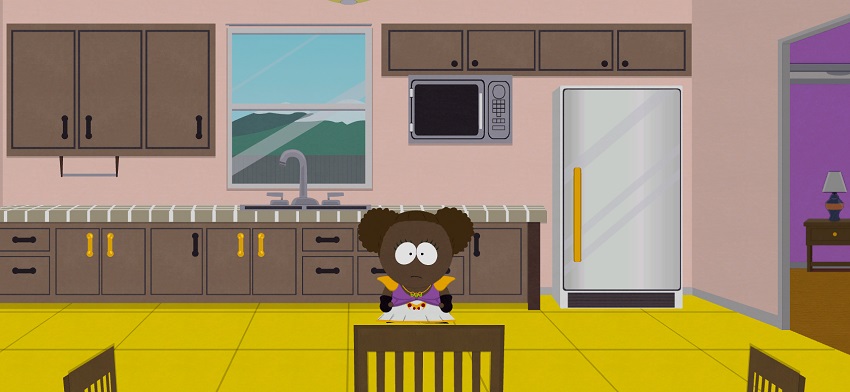
In South Park, elements with which a player can interact are highlighted in bright yellow: a refrigerator and two cabinets. This simple highlighting allows the player to understand what he can interact with.
Graphic prompts can be incredibly useful when setting goals. When a player sees his task, it must have some meaning for him. Mario collects coins because they are obvious objects to collect.
In Plants vs. Zombies of the player’s tower are plants because they are immobile, and he is protected from zombies - hordes of slowly moving enemies. If a game element causes players to have difficulties, then ask why ... If the reason is the lack of a logical connection, then review the enemy's design, abilities, etc.
If a player is on the right path to a decision, then do not lead him astray simply because he is doing something not quite right. An old example of such a problem is the first part of Monkey Island , in which a player must pick up a mug of alcohol from a sleeping pirate with a pen.
If you tickle a pirate, the game says "I can not find a place on my body that is afraid of tickling." However, if you tickle his leg, it will work. The reaction of the game is not only useless, but also makes the player think that he needs a completely different solution.
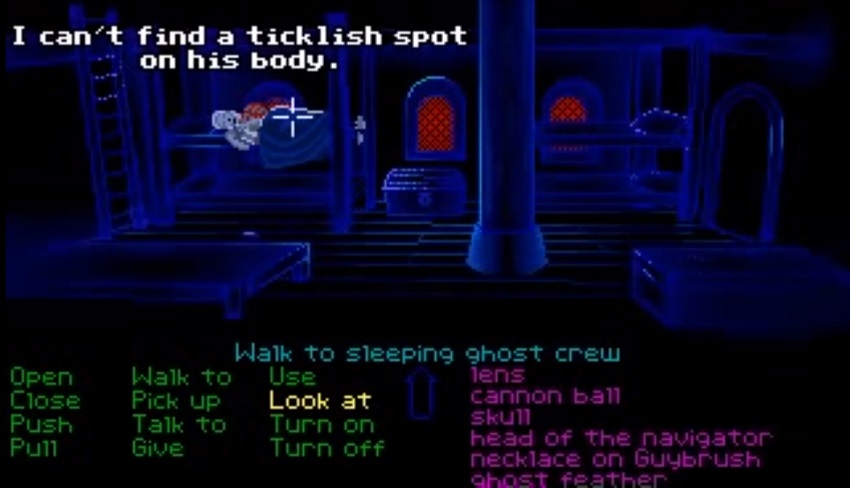
Part of the problem with this puzzle is that the game describes the pirate and his leg in the same way as "sleeping ghost crew". If the foot were called “ghost crew's foot”, the puzzle would be clearer.
Clear action
Finally, we must make sure that the actions of the player are clear. We have rules, goals, so we need to understand what will happen when he tries to apply these rules to achieve goals.
To simplify, let's imagine that we are creating a Mario clone. When a player presses the jump button, the character usually jumps, but there is a 1% chance that the character will sit down instead. I hope you already thought: "That sounds pretty stupid." So why do we see similar decisions in games?
One of the most frequent perpetrators of this problem is context-sensitive commands. Sometimes they work, and sometimes they don't. If you play a console game like Diablo 3, then you quickly notice that the main attack button is also an interaction button, that is, fights near portals can lead to random teleportation. In Prince of Persia, the teams “jump” and “running along the walls” were on the same button, which most often worked normally, but sometimes the player activated the wrong action and ran straight into the death trap.
Attempts to perform an action at an unnecessary time can also annoy players. Computers execute thousands of commands per second, so it’s difficult to press the right button at the right millisecond. If a player needs to jump over several holes, then skipping a single jump due to pressing a button a split second earlier can also be annoying.
In some games, the so-called “input buffering” is implemented for fights: the command is “saved” for a specified period of time (say, 5 frames) and is transferred to the next free action. You can also be allowed to perform actions after it is already too late. If a player fell off a cliff and after that pressed the jump button, then it is quite possible to give him one or two frames in order to have time to react. This is not necessary for all games, but where a good reaction is required, it is often more interesting to give the player a chance, rather than punishing him for missing a reaction time interval. Just do not be too zealous with this.
Another aspect, and perhaps the most important, is to ensure that the player always sees what is happening on the screen. There is a temptation to fill the screen with flickering effects and particles, but if there are too many of them, the player will not understand what is happening and it will be harder for him to play.
One of the most active violators of this rule is The Binding of Isaac , in which it is not difficult to collect many weapon upgrades and pursuers, it is almost impossible to understand what is happening on the screen. Moreover, it seems that the game finds perverse pleasure in complicating the player's life - “curse of darkness” makes everything on the screen darker, which is why the player may stumble upon an enemy or a trap that he hasn’t even seen.
In addition, some enemies create a "creep", a dangerous substance lying on the ground that does damage when touched. On most levels, creep is clearly visible, but on some it merges with the red background, becoming almost invisible.
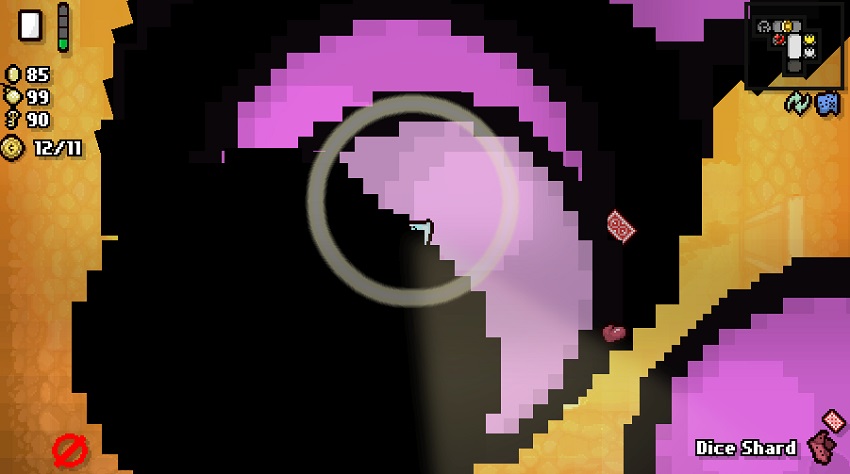
This picture is ... something. I have no idea what. You can just run out the door on the right.
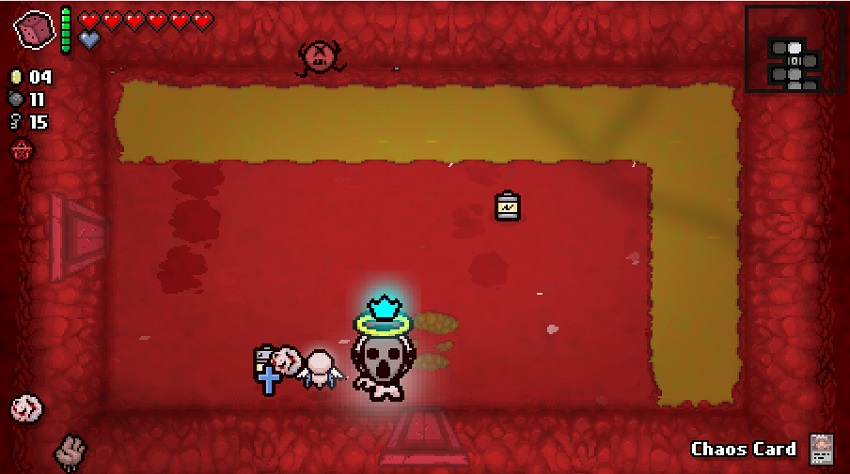
In this picture two puddles of creep are active: one on the left, next to the door, the other on the right, next to the battery. Both can kill you.
And finally - let's go back a bit: make sure that the player is not surprised by the strange results when performing the action. Specifically, we again return to the discussion of invisible walls, but of a special type: blocking objects. Some games refer to a player’s character as a rectangular pillar, that is, the only way to go through a small object (say, a small pebble) is to bypass it or jump over it.
Of course, in real life we can stumble over a pebble, but this behavior is not necessarily simulated in the game. Therefore, when a player moves into 3D space, then allow him to penetrate small objects, or do not create physical colliders for them at all. Especially bad in this respect are games on the old Half-Life engine (such as Team Fortress 2 ); players could get stuck in all kinds of objects.
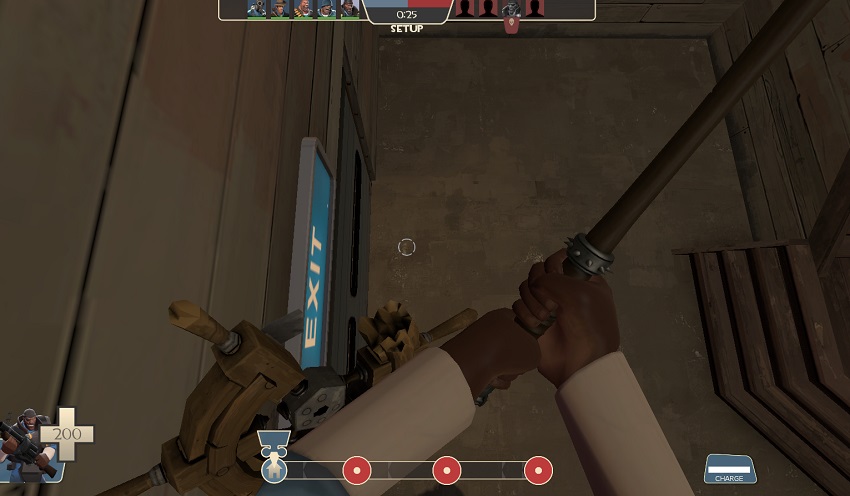
As if nothing had happened, we were standing on the exit sign. Yes, even this tiny pointer, hanging on the wall, can withstand the weight of a person.
Summarize
Despite the fact that the connection of all these aspects seems to be weak, in fact they are different sides of the same principle: there should be mutual understanding between the player and the game. If the player does not understand what is happening, then he will not be able to make a good choice.
Of course, some games create a kind of meta-game from attempts to understand the rules - they give the player a puzzle, but they talk about its purpose. Sometimes it works, sometimes not. That is how The Witness does, and although this game has rather high marks, it was perceived rather contradictory. Someone loves her, and some do not ... maybe they have five minutes to start bored with her.
However, this mystery does not interfere with the game, because it is a game. There are many opportunities for games in which the player is engaged in research and finds out how everything works. In addition, if you explain the player all the rules, you can lose some interesting game.
In general, as always, you need to strive to ensure that the player was interesting. When a player is confused, he is most likely not immersed in the game. When a player dies due to the fact that he could not foresee anything, then very soon it starts to annoy him. But when a player makes a choice and this choice is important, he feels rewarded and continues to play.
Source: https://habr.com/ru/post/346654/
All Articles